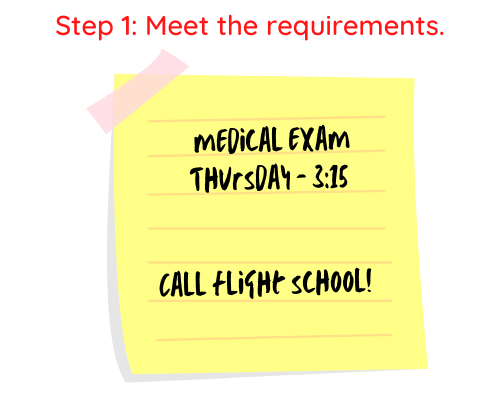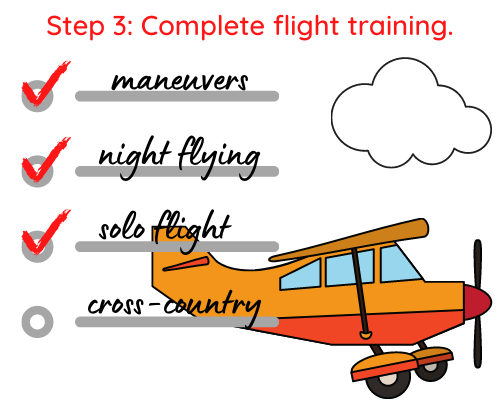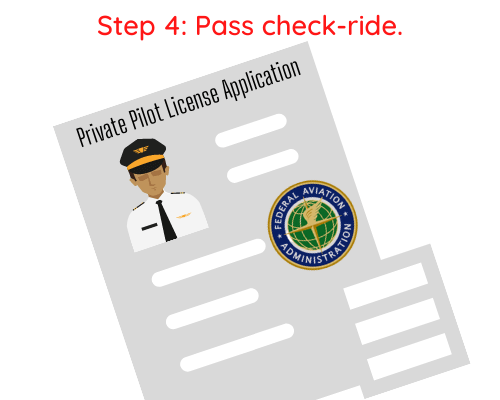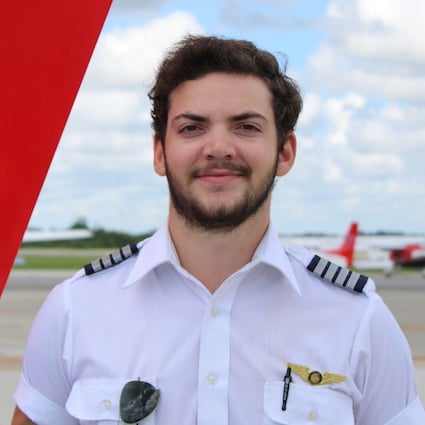Private Pilot License: 4 Steps to Your PPL In 2024

What is a Private Pilot License?
Many people ask about PPL meaning. PPL stands for Private Pilot License. The Private Pilot certificate, internationally referred to as the Private Pilot License (PPL), is your first goal as a pilot. (Note: In the UK, this would be private pilot licence.) The PPL provides foundational knowledge and skills for all future aircraft pilot training. As a Private Pilot, you can fly an airplane day and night in visual flight conditions. In fact, you can even carry passengers, such as friends, family, and co-workers. Still, there are some restrictions. For instance, you cannot fly for paid compensation or hire. In other words, you can’t make money as a private pilot or look for actual jobs flying. However, you can share the operating expenses with your passengers. The PPL is your foundation course on a pathway to an airline pilot career where you can earn a good salary.
If flying is your dream, the PPL is your first step. And, you can train right here in sunny Florida! Wondering how to begin? Keep reading!
Private Pilot License Course Requirements
To be eligible to pursue your Private Pilot License, you must meet certain requirements, such as:
- Be at least 16 years old to fly solo.
- Be at least 17 years old to receive your private pilot certificate.
- Read, speak, write, and understand English.
- Obtain at least a third-class medical certificate.
- Perform basic math: adding, subtracting, multiplying, and dividing.
4 Steps to Become a Private Pilot
Time needed: 90 days
4 Steps to Become a Private Pilot
- Meet the requirements.
Create a checklist of all requirements, such as age, paperwork, and skills to become a student pilot. The FAA allows you to begin flight training at a young age. However, you must be 16 years old to fly solo and be at least 17 years old to officially receive your PPL. You must be proficient in English, hold a third-class medical certificate, and possess basic math skills. If you meet these requirements, you’re ready to begin training.

- Complete ground school.
Your ground school classes cover a wide range of topics to prepare you for flight training, such as aerodynamics, weather, flight planning, and navigation. Ground school typically takes about 4 weeks to complete and may even be done virtually. You will likely do some flight simulator training while attending ground school. Once you complete your ground school training, you must pass the FAA written exam to complete this step.

- Complete flight training.
The FAA requires 40 hours of actual flight training in order to earn a private pilot license. This includes day and night flying, cross-country, and other types of flight training requirements, such as various maneuvers. Your flight instructor will train you in all required skills, and it is typical for most student pilots to train for 50 or more hours to build the skills and confidence they need. These skills can be augmented in a simulator.

- Pass your check-ride.
Once your flight instructor feels you are ready, he or she will sign off and arrange your final check-ride with an FAA examiner. This is your opportunity to demonstrate your knowledge and skills as you plan a flight, interact with ATC, fly maneuvers, and follow all directions from the examiner. When you pass your check-ride, you’ve earned your stripes and are now an official private pilot. This entire process takes about 3 months.

PPL Course Overview
The Private Pilot course is the first course taken by new student pilots. Epic values the importance of a strong foundation. Therefore, we provide a blended instructional approach that includes our online Virtual Flight Academy, Ground School and Aviation Skill Development. Students learn basic aerodynamics and FAA regulations. Furthermore, you learn about aircraft weight balance and aircraft performance. You learn this in the classroom and during flight simulator training. Flight lessons within the PPL course include aircraft maneuvers and procedures required for your solo flight. You’ll also conduct a daytime cross-country flight. As an FAA-rated flight school, our training ensures ACS (Airman Certification Standards) for all students.
Once you complete the Private Pilot course, you’ll have extensive aeronautical experience. As a result, you can apply for your FAA Private Pilot Certificate (PPL). This is the first step to becoming a Professional Pilot.
All Private Pilot training flights are conducted in new Technological Advanced Aircraft (TAA). Furthermore, our aircraft are equipped with WAAS-capable instrument-certified GPS. We are proud to offer pilot training using Cessna 172s. This is one of the safest aircraft ever built.

Would you rather watch our 4-minute Private Pilot video?
PPL Course Duration
Full-time students enrolled in the Professional Pilot program complete 5 lessons per week. Students who dedicate themselves to completing their PPL by studying hard earn their wings quickly. By making pilot training their top priority, they are able to complete within a 3-month period. Part-time students that are working or enrolled in school may take longer. As a result, they typically find that their PPL takes 4-6 months to finish based on their available schedules.
PPL Course Training
The FAA requires students to log a minimum of 35 total flight hours in order to be eligible for the Private Pilot’s License (PPL). However, with today’s technology, fewer than 5% of pilots complete their training within the minimum flight requirements. Based on our experience, students need a minimum of 50 airplane flight hours to meet the PPL requirements. Students that progress quickly through the courses are proficient at English. They usually fly 5 times per week, work hard in their ground lessons, and study independently. They have also taken courses through our Virtual Flight Academy before arriving at flight school. We’ll get you through Ground School and Flight Training so you’ll be ready for your FAA test.
How much does a Private Pilot License cost?
Earning a private pilot license requires a time commitment of approximately 3 months. Therefore, you should plan your budget and calendar accordingly. Course tuition at Epic includes books. The cost to earn a private pilot license varies by flight schools. Here you can see the cost breakdown for Epic’s course.
PPL Ground School/Aviation Skills Development – 65 Hours
Simulator | TruFlite Cessna 172 w/ Instructor – 30 Hours
Flight | Cessna 172 w/ Instructor – 40 Hours
Solo Flight | Cessna 172 – 5 Hours
One-on-One Ground Instruction – 20 Hours
Pre/Post-Activity Briefing – 6 Hours
Total Course Time: 3 months
Total Course Tuition: US Students – $28,822
Financing options are available.
Meet Your Private Pilot Course Team Leader!

Sam Maner is Epic’s Private Pilot Course Team Leader. He completed all of his flight training Epic and is here to help you earn your first pilot rating. Sam looks forward to welcoming you to campus.
Frequently Asked Questions

Q: How do I get a private pilot license?
A: To earn an FAA PPL, you must be 16 to fly solo and 17 to earn your license. Additionally, you must meet health requirements for your medical exam and fly the required number of hours. After you complete your coursework and flight training, you’ll have to pass your FAA written exam and checkride.
Q: What can you do with a private pilot license?
A: You can fly fixed wing aircraft for sport and fun. However, most students attend flight school with the goal of getting pilot jobs.
Q: How long does it take to get a private pilot license?
A: Epic students typically earn their Private Pilot License in an average of 3 months. However, some complete much sooner.
Q: How many hours for a private pilot license?
A: Under Part 61 training, the FAA requires you to fly 40 hours. Under Part 141 training, they require 35. The number of flight hours varies among student pilots. Cessna reports the national average at 75.
Q: Where can I live while I’m studying to earn my PPL?
A: If you are from out of town, Epic does offer housing rentals. There are also many rental options nearby including studio apartments.
What’s next after I earn my Private Pilot License?
Once you have earned your PPL, you will probably want to go on to the next rating: IFR (Instrument Flight Rules). This is the next step toward the ultimate goal of becoming a professional pilot!
